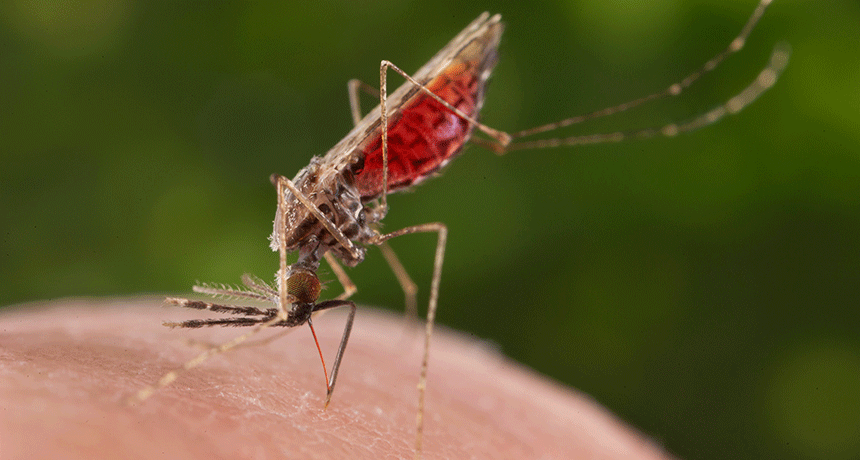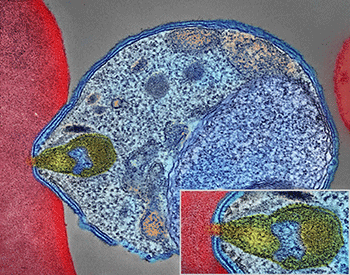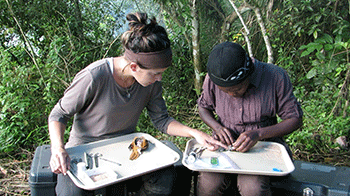
CHICAGO, Ill. — Science detectives are following new clues in their quest to stop a killer — malaria. The disease claimed the lives of roughly 429,000 people in 2015 alone, according to the World Health Organization. And kids face the biggest risk.
More than seven in every 10 of malaria’s victims are children.The disease is caused by a parasite that spends part of its life cycle in mosquitoes and part in blood-making animals. Once it gets into people, it attacks liver and blood cells. Mild cases cause fever, headaches and chills. Severe cases leave the blood with too few healthy cells to carry oxygen. Sometimes, the disease also affects the lungs and brain.
Some medicines can cure malaria. But those drugs don’t always work. So scientists are exploring new ways to thwart this killer. Last summer, they described two of them at a meeting here in Chicago, Ill.

“Malaria doesn’t just affect humans,” explains Holly Lutz. She works in Chicago at the Field Museum and the University of Chicago. Bats, other mammals, birds and lizards also can develop the disease. “In fact, nearly all terrestrial vertebrates can be infected with their own species of malaria,” she says.
Lutz calls herself “both an evolutionary biologist and a microbial ecologist. But first and foremost, I am an explorer,” she says.
By exploring animals and their parasites, Lutz hopes to learn more about how to thwart malaria in people.A microscopic parasite called Plasmodium (Plaz-MO-dee-um) is behind the illness. Mosquitoes pick up the microbe when they feed on infected blood. It grows in their gut. Then it gets into the insects’ saliva. When a mosquito takes its next bite, it can now share some of these parasites with a new host. In many cases, that host may be a human.
There is some good news. Malaria killed only about half as many people in 2015 as it did 15 years earlier. Bed nets helped. People drape these mesh curtains, treated with mosquito-killing poison, over their beds at night. Medical care is better in some areas, too.
Story continues below video
But here’s the bad news. Like other organisms, the parasites that cause malaria evolve. As a result, more of them can now resist the microbe-killing action of various drugs. Mosquitoes also evolve. Some can now resist common insecticides. That means they can survive to infect more people — and reproduce. And climate change is altering weather patterns around the globe. In the future, malaria-carrying mosquitoes will likely survive in more places.

Here in Chicago, two researchers are taking very different approaches to dealing with the problem. Lutz looks at malaria in wildlife. University of Chicago ecologist Mercedes Pascual asks how things like climate change or human sprawl might affect malaria’s spread.
For the birds?
Lutz’s research has taken her to remote parts of Africa, Central America and South America. She wants to know how wildlife deal with malaria. She hopes that what she learns will offer “insights into our own human struggle with this devastating parasite.”
For example, in the East African nation of Malawi, her team collected blood from 152 bird species. Those blood samples showed links between malaria infection rates and the behaviors of different types of birds. For example, they showed two years ago, malaria parasites were more likely to infect bird species that built closed-cup nests.
In her lab, Lutz studies the malaria parasites. These single-celled microbes live inside blood cells. To study the parasites, she has to get them out. Her team recently developed a way to do that. They use a laser to cut a single parasite cell away from the rest of a host’s blood cell.
With the microbes now freed, the researchers can study the genes in the parasites’ DNA.
For one project, Lutz looked at DNA from about 250 Plasmodium species. They included every species known at that time to cause malaria. Many had been discovered in African birds and bats. “Using the DNA from these parasites,” she explains, “I…
The post Scientists probe new ways to control malaria appeared first on FeedBox.